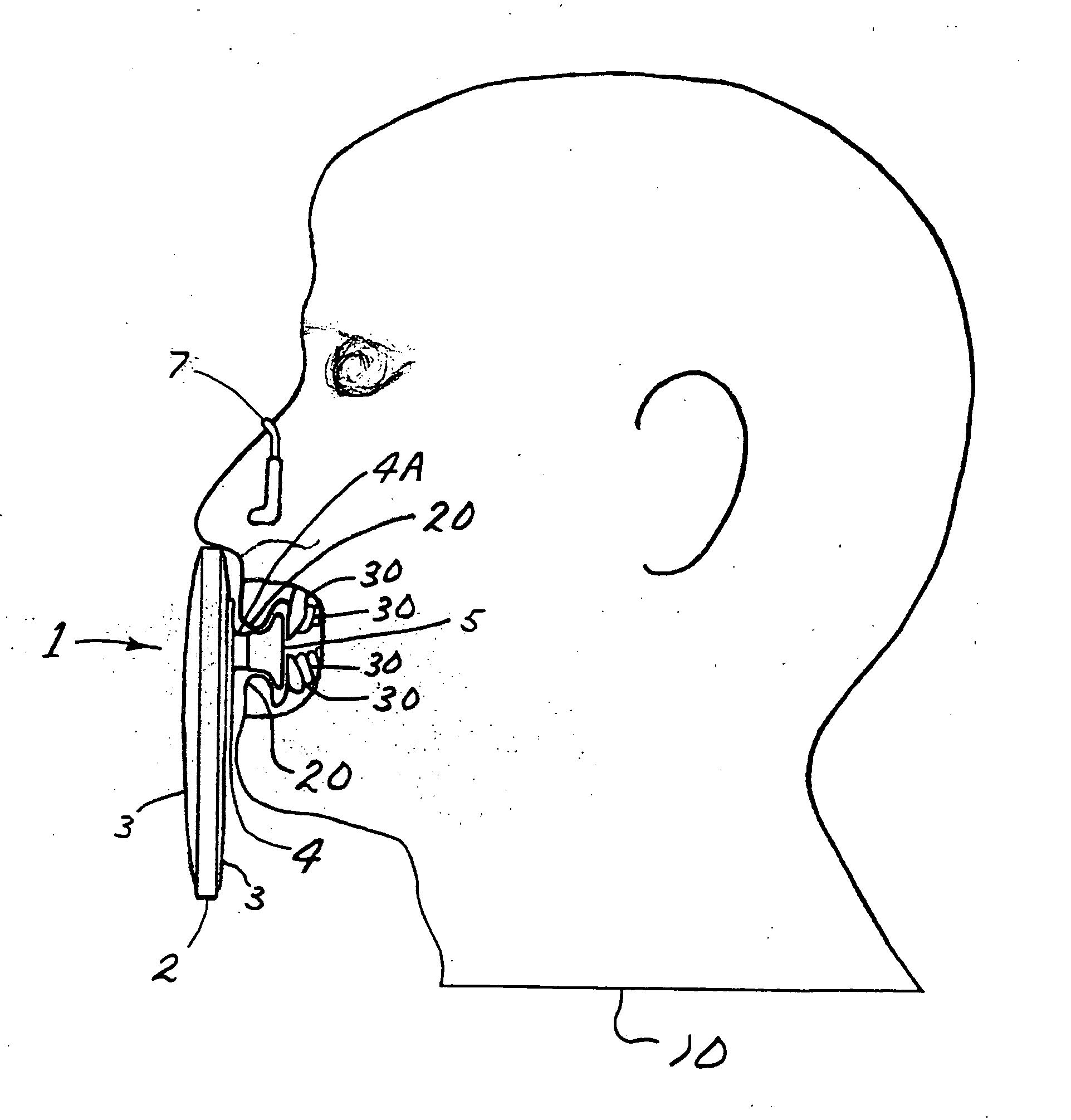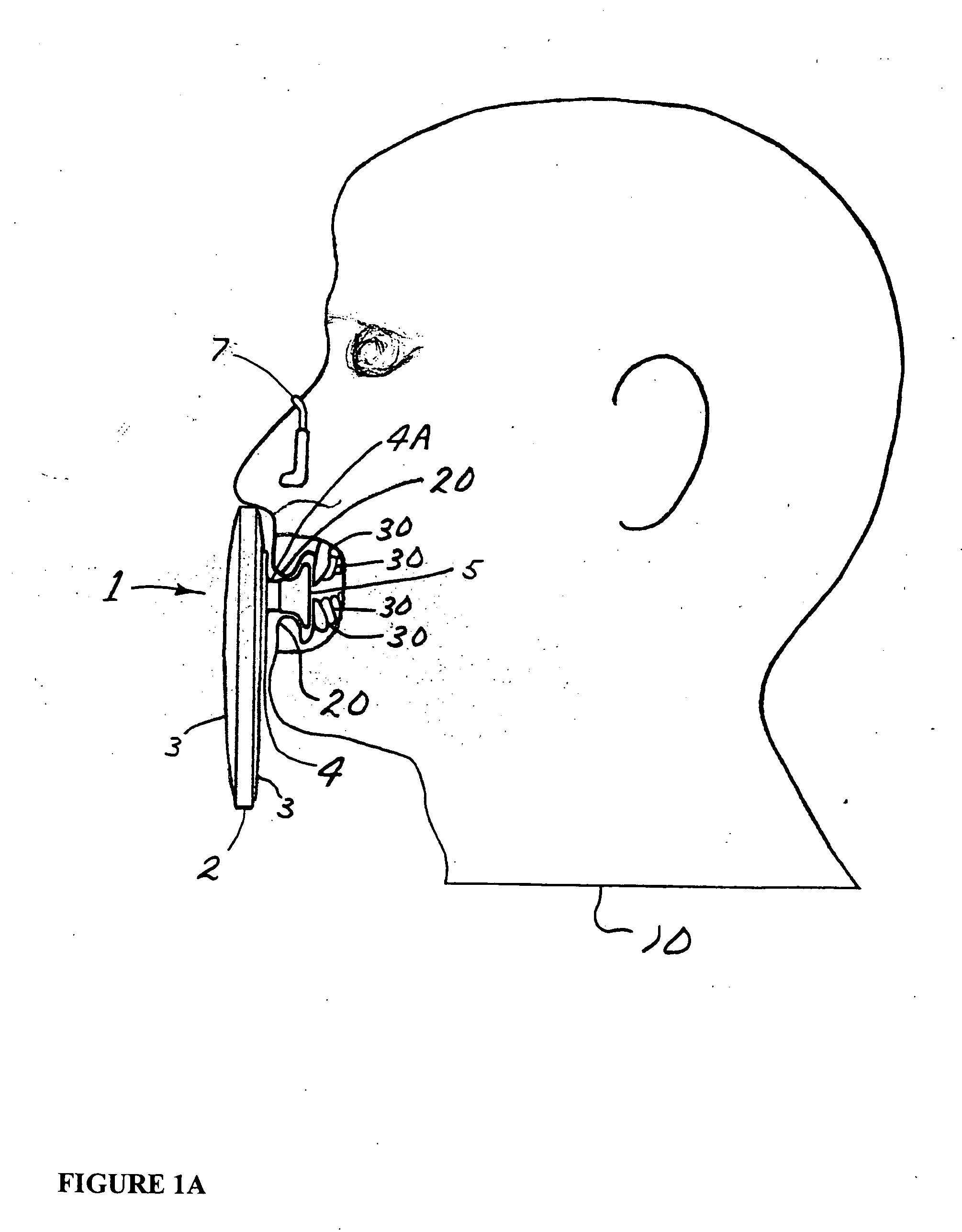Personal respirator
a respirator and personal technology, applied in the field of personal respirators, can solve the problems of hammering the capabilities and safety of the wearer, affecting the respirator is also hot and heavy to wear, so as to avoid the effect of wear and tear, and improve the safety of the operator
- Summary
- Abstract
- Description
- Claims
- Application Information
AI Technical Summary
Benefits of technology
Problems solved by technology
Method used
Image
Examples
Embodiment Construction
)
[0015] Referring to FIG. 1, a personal respiratory protection device is designated by the numeral 1. Device 1 is simply installed by placing mouthpiece 5 in the mouth and the nose clip 7 on the nose.
[0016] The mouthpiece is designed to interconnect the device 1 to the user. While this mouthpiece 5 can be of many forms, in the embodiment shown, it is substantially an oval flange having its longitudinal axis substantially in line with the longitudinal axis of the user's mouth (i.e., horizontally between the lips).
[0017] Preferably, the mouthpiece 5 is made of a soft, food grade type material, like silicone, shaped so that when inserted into the mouth between the lips, anterior and adjacent to the teeth, the wearer's lips press down on the air tube 4 (includes tube parts 4 and 4A), (see FIG. 1A) providing a seal, support, and an airway from mouthpiece 5 to the filter plenum 2. This configuration allows the mouth to close and function normally. With the mouth closed, the swallowing p...
PUM
 Login to View More
Login to View More Abstract
Description
Claims
Application Information
 Login to View More
Login to View More - R&D
- Intellectual Property
- Life Sciences
- Materials
- Tech Scout
- Unparalleled Data Quality
- Higher Quality Content
- 60% Fewer Hallucinations
Browse by: Latest US Patents, China's latest patents, Technical Efficacy Thesaurus, Application Domain, Technology Topic, Popular Technical Reports.
© 2025 PatSnap. All rights reserved.Legal|Privacy policy|Modern Slavery Act Transparency Statement|Sitemap|About US| Contact US: help@patsnap.com



